NICU Wall of Hope
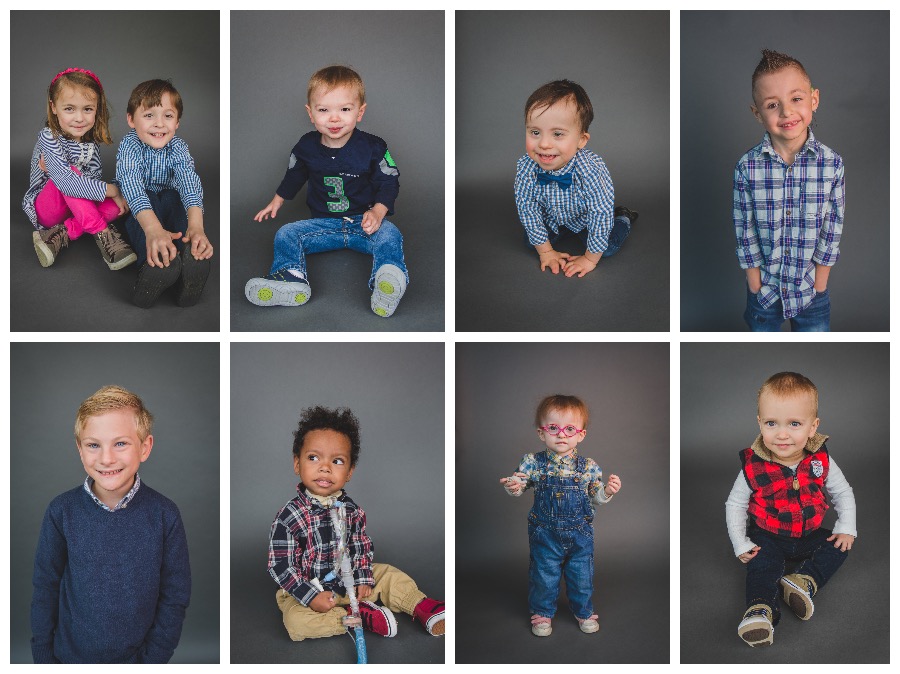
Hope is what families and newborns receive every day in our Neonatal Intensive Care Unit. The hope to get better. The hope to go home. Here are stories of some courageous kids and their families.
Each first was a celebration
Kadri and Sander
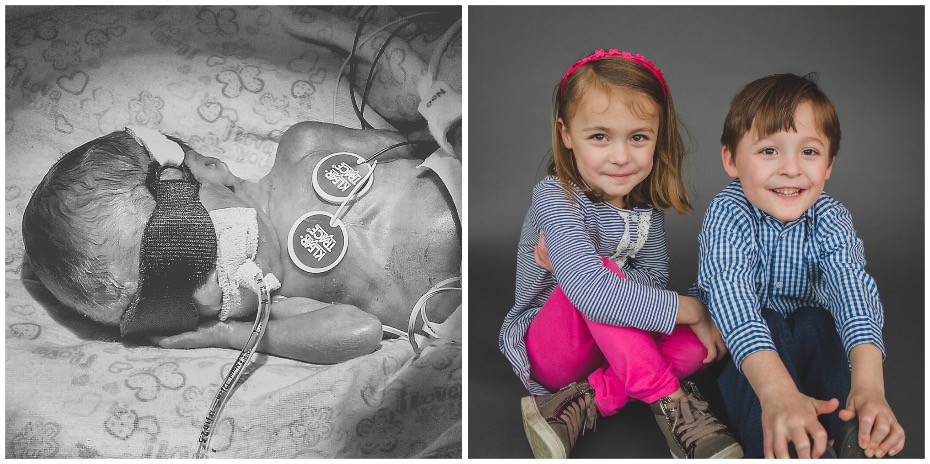
Twins Kadri and Sander were born at 25 weeks, each weighing 1 pound, 10 ounces. Sander broke his arm during delivery, leaving him severely bruised and requiring a tiny splint. They both had health complications, including brain bleeds, eye trouble, and heart and lung issues.
One challenge of having twins in the NICU is that when one is having a good day, often the other isn’t. The nurses taught their parents how to care for them, recognize cues and understand their needs.
Their parents enjoyed reading to them, and the kids seemed to enjoy listening. They would stop fidgeting, relax and breathe better. Each milestone — each new ounce of weight, each “first” such as skin-to-skin contact (kangaroo care), each smile — was a celebration.
The kids fought hard and finally went home after 104 and 105 days. For several months after, they were on oxygen, had frequent follow-up appointments and had developmental delays.
Today they are in school and fun to be around.
Stubbornness helped him beat the odds
Elijah
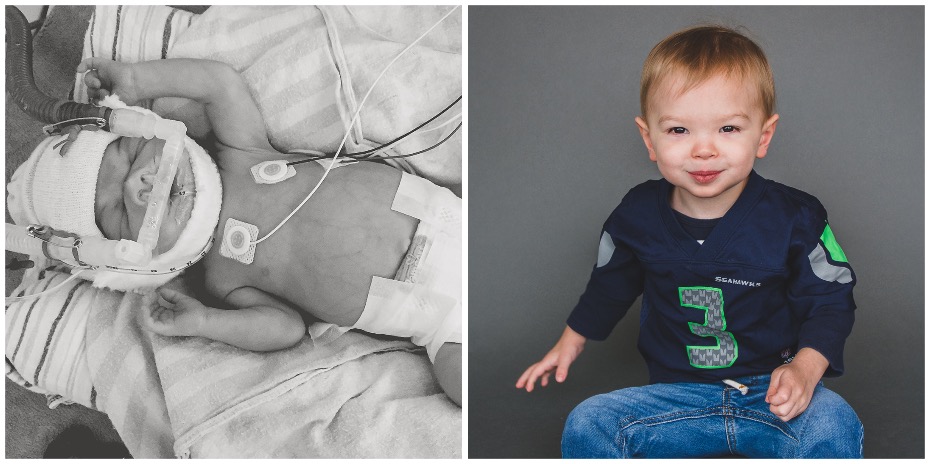
Elijah was born at 24 weeks during an emergency C-section. His mother had hemolysis (a breakdown of red blood cells), elevated liver enzymes, low platelet count and a liver rupture. He spent several days in the intensive care unit unable to visit him.
Elijah faced many challenges, including an E. coli infection, an abnormal blood vessel growth in the eyes (retinopathy of prematurity), brain bleeds and chronic lung disease. He had several IV lines to give medications, and many blood transfusions. He was also on several types of ventilators.
After 111 days, Elijah left the NICU on oxygen and a feeding tube. He had many follow-up appointments with the feeding clinic, pulmonologist and gastroenterologist. Elijah’s only developmental delay was speech.
Elijah is a sweet boy who loves hugs, playing chase and going outside. His bravery and stubbornness helped him beat the odds to be here with us today.
Key ingredients to success
Colter

Colter John was born with Down syndrome. During a routine prenatal stress test, the doctor told us, “I think today’s his birthday.” After a C-section, Colter was blue and his vitals low. His big tongue had blocked his airway. Doctors and nurses worked hard, reassured us, and by the grace of God, he began to breathe. Thus began a three-month stay in the NICU.
Colter had surgery for a congenital defect of the gastrointestinal tract (duodenal atresia). After surgery, he began to swell up like a balloon because of excess fluid building in his body. After multiple attempts to drain the fluid and a round of chemotherapy, Colter gradually recovered.
The determination, warmth, love and sacrifice of all those who cared for him were the key ingredients to Coulter’s success. Even after leaving the NICU, those individuals continue to root him on.
Colter loves to play with his older siblings. They are by far his greatest therapists. We’re constantly surprised by the strength and joy of our son.
The long and winding road
Nehemiah
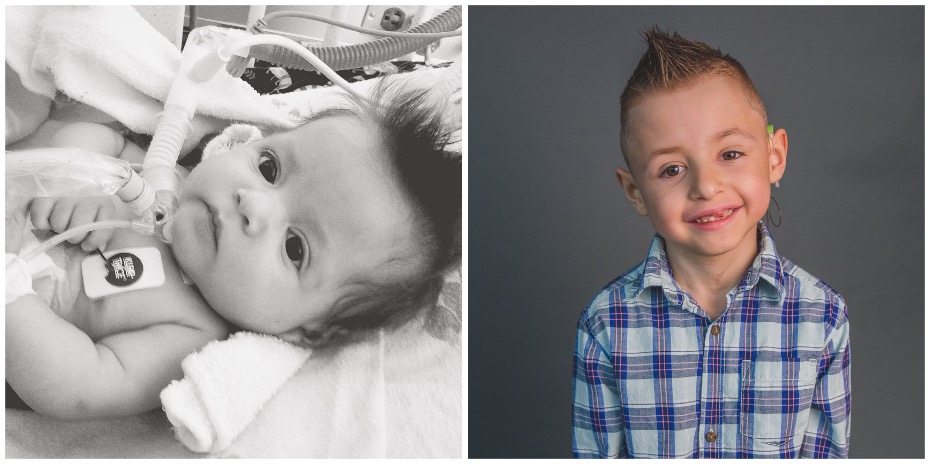
Born weighing only 1 pound, 1 ounce, Nehemiah started life with an inflammation in his intestines (necrotizing enterocolitis). His swollen and gray stomach was treated with antibiotics. Nehemiah would have several more infections while in the NICU that required blood and platelet transfusions.
After four months, Nehemiah was about to go home. Unfortunately, he pulled out his feeding tube and inhaled the contents into his airway and lungs. He needed to be intubated (connected to a ventilator with a breathing tube). That’s when providers learned he had high carbon levels and pulmonary hypertension — high blood pressure that makes it harder for blood to flow through the lungs and that weakens the heart. This changed everything.
Over the coming days and weeks, the doctors inserted a tracheostomy tube to help him breathe. They also repaired an open blood vessel to the heart that didn’t close after birth (patent ductus arteriosis). Although it took some time, he started to improve and eventually recovered.
After seven and a half months, Nehemiah went home on a ventilator and feeding tube. Over time, he was able to breathe and eat on his own. Today he is happy, healthy and full of life.
Feisty from the start
Beckham

Beckham was born four weeks after his mother’s water broke early (premature rupture of membranes). He entered the world via an emergency C-section and was immediately taken to the NICU. Though he weighed a mere 1 pound, 15 ounces, his nurses described him as “feisty” and “a wild one.”
Beckham had a bumpy stay in the NICU. He faced many challenges after being born prematurely, including chronic lung disease, intestinal inflammation (necrotizing enterocolitis) and an abnormal blood vessel growth in the eyes (retinopathy of prematurity). Underdeveloped lungs were his biggest challenge. Through it all, hope stayed high and small successes were celebrated.
He went home after 115 days with a feeding tube and on oxygen. He continued to be followed closely by a team of specialists. His appointments have lessened over the years but not stopped.
Prematurity does not define Beckham. What does are the same qualities he showed on the first day of his life: courage and determination.
The best gift
King
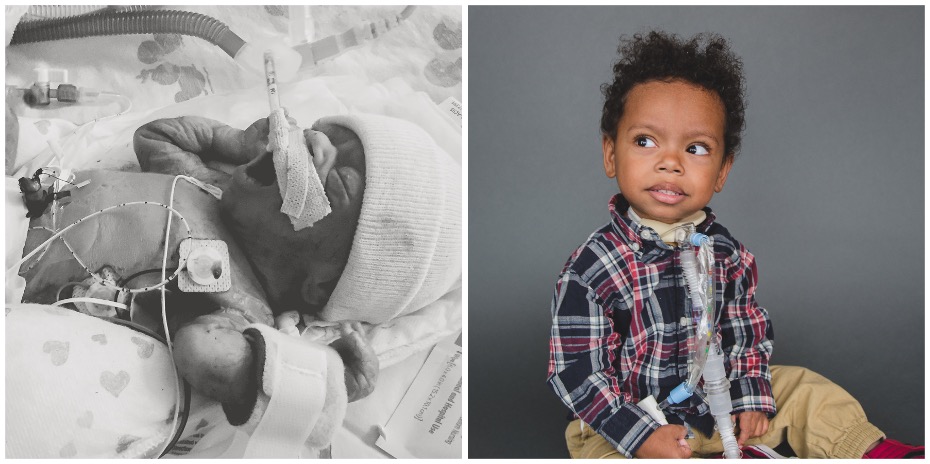
King arrived via C-section at a little over 31 weeks after his mom’s water broke early. He was quiet and still, clinging to life while being rushed away by an extraordinary team who stabilized him.
The first three days were a blur of difficult conversations, unpredictable emotions and more questions than answers. We had to wait and learn to be patient.
He had chronic lung disease and was unable to eat. We soon learned that he suffered multiple cerebral hemorrhages (bleeding in the brain) in the womb. His long-term prognosis was unclear. During his care in the NICU, he had a tracheostomy to help him breathe; a feeding tube; and two hernia repairs.
After almost seven months, King came home shortly after Christmas. It was the best gift we could ever hope for. Today, he is an engaging youngster who is anything but average. He has a keen sense of humor and an indomitable spirit.
Small but mighty
Martha

Mighty Martha was born prematurely at 30 weeks via C-section because her mother had high blood pressure during pregnancy (preeclampsia). Her parents heard what they thought was a small cry as Martha was whisked to resuscitation and then to the NICU. There, she would spend the next three and a half months.
Martha spent a month on continuous positive airway pressure (CPAP) to help make breathing easier. She also needed a feeding tube.
A few months later, she needed a different type of feeding tube. During the surgery, doctors discovered a congenital defect that prevented her from being able to eat. The next month, another surgery corrected the condition.
After leaving the NICU, Martha continued to see many specialists. These days, she has fewer appointments, but her prematurity and other health concerns are a daily part of our lives. Martha is bright, hilarious and still mighty.
Mastering feeding takes a little help
Thomas

Thomas was born after his mom’s water broke early. He arrived at 31 weeks and one day, and weighed 4 pounds, 4 ounces. We were thrilled to meet him but incredibly worried about his stay in the NICU. How would Thomas’s early arrival affect him now and as he got older?
The first few days, Thomas needed help breathing with a continuous positive airway pressure (CPAP) machine and spent a day under light therapy to treat newborn jaundice (yellowed skin). After clearing those hurdles, his primary goal was to master feeding. Since the sucking reflex had not developed before birth, he needed a feeding tube. Progress was slow but steady. Thomas was eventually able to eat normally.
Thomas went home after 27 days. Now 2 years old, Thomas is independent, active and loving. We’re grateful every day for the gift of his health, thanks largely to the fantastic care he received in the NICU.